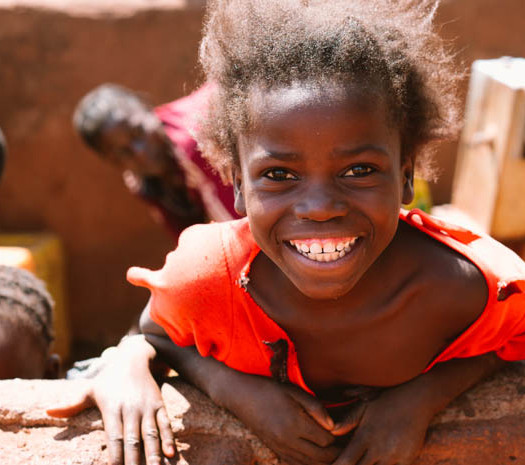World Day Against Trafficking And The Fight Against Modern-Day Slavery
The recruitment, transportation, transfer of human beings through use of force, coercion, abduction, fraud, deception, use of power or paying a person in control of the victim is known as human trafficking. Countless stories on human trafficking appear in newspapers every day. The heinous acts of trafficking human beings is complex and it’s often termed as the modern day ‘slavery’ that’s practiced in almost every country. In a grave violation of human rights, thousands of men, women and children are abducted, kidnapped or manipulated into being trafficked out of their country or locality every year. The trade of humans is used for the purpose of sexual slavery, forced labor, sexual exploitation, or trafficking of products; both nationally and trans-nationally. In some cases, human bodies are used as harvesting places for export or import of illegal products, such as drugs.
The majority of the cases show that people are associated with this vicious business due to their economic ties and after drug smuggling and arms dealing, it’s the second largest criminal enterprise in the world. Human trafficking reportedly generates a profit of $32 billion every year with $15.5 billion being made in industrialized countries. According to resources, the average age of a young woman being trafficked is 12-14 years old and most of the trafficking involves sexual and labour exploitation.
According to a report, children are exposed to the same trafficking techniques and the exploitative conditions and experiences leave them more likely to develop mental health issues, drug addictions, involuntary servitude, and other criminal acts. Some children are also forced into prostitution. The International Labour Organization estimates that women and girls represent the largest share of forced labor victims with 11.4 million trafficked victims (55%) compared to 9.5 million (45%) men.
Among other countries, Bangladesh is one of the most commonly used locations for human trafficking. Some of the men and women migrate willingly under labour work contracts. Some recruitment agencies commit fraud and force migrant workers to practice illegal jobs; they are also subjected to commercial exploitation. According to a U.S. Department of State report, the Rohingya community in Bangladesh is vulnerable to human trafficking due to their social conditions.
In countries such as Pakistan, India, Bangladesh, the begging ringmasters coerce children into begging for a living. In some cases, the children are amputated to attract sympathy; the more dire the conditions of these beggars, the more chances they have of collecting money on the streets. It is not uncommon to see child beggars on the streets of Pakistan, at times they are accompanied by their parents and at times they can be seen walking on the roads alone. Women and children approach the paused cars, asking for money, food or clothes. Parents also sell their children into a form of bondage, for instance, if they have borrowed a sum of money, they can exchange their children for services, thus relieving themselves from the responsibility of paying the debts. The method of bondage is not limited to labour, some Bangladeshi and Pakistani families send their children to brick kilns, where the owners sell the females for prostitution. According to the U.S. State Department, 600,000 to 800,000 people are trafficked across international borders every year, of which 80% are female and half are children.
Amnesty International: In addition to Women’s Rights Offices, Amnesty International handles issues of human trafficking within it’s regional offices. Learn more.
Coalition Against Trafficking Women: CATW works internationally to fight against trafficking and sexual exploitation in all it’s various forms. Learn more.
Human Rights Watch: The largest organization in United States, Human Rights Watch overseas various human rights issues and attempts to combat human trafficking. Learn more.
Project HOPE International: A non-profit organization based in Washington D.C, Project HOPE International fights against human trafficking and provides aftercare services for all those who were part of trafficked group. They try to help those who have experienced the unfortunate and atrocious act of human trafficking. Learn more.
The Asia Foundation: This foundation aims not just to alleviate and prevent all forms of violence against women, but they also aid those who need help after experiencing human trafficking. They address issues faced by women such as domestic violence (including acid throwing and bride burning). Learn more.
01 | You can begin by starting or signing a human trafficking petition.
02 | Stay up-to-date by reading the latest news about human trafficking. Write about it, spread the news using social media to generate awareness.
03 | Organize a fundraiser and donate the proceeds to an anti-trafficking organization. You can hold the fundraiser events at a small or large scale, any donation collected is beneficial for a bigger change.
04 | Students can take action by spreading awareness on campus, writing about it in the campus newspaper, begin researching on the topic and seek help from expert opinions to verify and validate your findings.
05 | Write letters to local newspapers, or submit a feature story, profile or interview of someone who has been associated with human trafficking.
06 | Try to incorporate human trafficking information into your professional associations’ conferences, trainings, manuals and other relevant publications. Such outreach will only help in spreading the word.
For more information on how to help, visit: http://www.state.gov/j/tip/id/help/
For more information on organizations that are involved: http:/www.humantrafficking.org
FROM THE EDITOR
At Conscious, we are inspired by remarkable people and organizations and so we set out to tell stories that highlight human interests, global initiatives, innovation, community development and social impact. You can read more stories like this when you subscribe.




